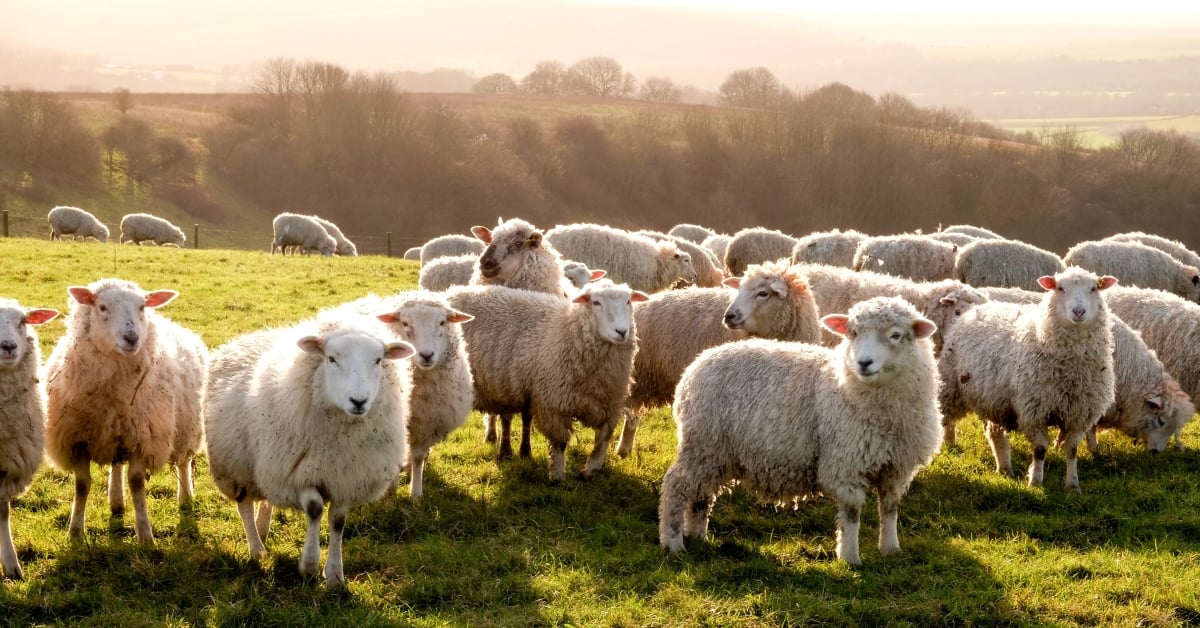As an avid sheep enthusiast, I’ve had the pleasure of witnessing the intricate miracle of childbirth firsthand. The gestation period of a sheep has always fascinated me, and in this blog post, I’m excited to share the comprehensive knowledge I’ve gathered over the years, from its definition to the latest practices.
![Sheep Gestation Calculator and Chart [Printable] - Gestation Periods](https://gestationperiods.com/wp-content/uploads/2020/03/Sheep-Gestation-Table.jpg)
Image: gestationperiods.com
The gestation period, also known as pregnancy, refers to the length of time an animal carries its young before giving birth. In the case of sheep, the gestation period is remarkably precise and predictable.
The Duration of Gestation
The average gestation period for a sheep is approximately 145 to 153 days, with a deviation of plus or minus five days. This period begins from the moment of fertilization to the birth of the lamb.
It’s important to note that certain factors can influence the duration of gestation, such as the breed of sheep, the age of the ewe, and the number of lambs being carried. For instance, younger ewes tend to have shorter gestation periods compared to mature ewes, and ewes carrying multiple lambs typically experience a slightly shorter gestation period than those carrying a single lamb.
Signs and Stages of Pregnancy
Throughout the gestation period, the ewe’s body undergoes various physical changes, and careful observation can reveal signs of pregnancy.
During the early stages (2 to 3 weeks), the most noticeable sign is a loss of interest in mating and an increase in appetite. As the pregnancy progresses, the ewe’s abdomen begins to expand, and the mammary glands enlarge in preparation for lactation. Towards the end of the gestation period (3 to 4 weeks before birth), the ewe’s vulva relaxes, and the udder becomes full and firm.
Regular weight monitoring can also provide insights into the progression of pregnancy. Ewes typically gain weight steadily throughout gestation, and a sudden weight increase in the final weeks is indicative of impending labor.
Management and Care of Pregnant Sheep
The well-being and management of pregnant sheep are of utmost importance to ensure a successful pregnancy and healthy lambing. Proper nutrition, vaccinations, and monitoring are crucial.
Providing high-quality forage and supplements tailored to the ewe’s specific nutritional requirements is essential. Regular vaccinations protect both the ewe and the developing lambs from preventable diseases. Regular monitoring for parasites and prompt treatment when necessary are also vital to maintain the health of the pregnant ewe.

Image: www.breedr.co
Birth and Lambing Management
The approach of lambing requires meticulous preparation and attentive observation. The lamb’s head should appear first, followed by the shoulders and body. Sheep typically give birth to one or two lambs, aunque they can occasionally produce up to four.
If any complications arise during labor, such as a breech presentation or prolonged labor, immediate veterinary assistance is necessary. Providing a clean, sheltered area for lambing is essential, and post-birth care for both the ewe and the lambs is paramount to ensure their survival and well-being.
Conclusion
Understanding the gestation period of a sheep and the associated management practices is fundamental for successful sheep farming. By adhering to the principles outlined in this article, sheep breeders can optimize the health and productivity of their flocks.
Whether you’re a seasoned sheep farmer or simply interested in the intricacies of animal reproduction, I hope this comprehensive guide has provided valuable insights into the fascinating journey of sheep pregnancy and birth.
What Is The Gestation Period Of A Sheep
FAQs
Q: How can I determine the expected due date of a pregnant ewe?
A: The expected due date can be estimated by adding 145 to 153 days to the date of breeding. Consider the ewe’s breed, age, and number of lambs carried when calculating the specific date.
Q: What are the signs that indicate approaching labor?
A: Signs of approaching labor include restlessness, swelling of the udder, relaxation of the vulva, and a discharge of a thick, clear fluid known as “show.”
Q: How long does lambing typically take?
A: Normal lambing should proceed smoothly and can take anywhere from 30 minutes to several hours. If labor exceeds six hours, veterinary assistance is recommended to prevent complications.
Q: Is it necessary to separate the lambs from the ewe after birth?
A: In most cases, it’s not necessary to separate the lambs from the ewe unless specific circumstances arise, such as illness or rejection by the mother. Providing a clean and sheltered environment for the ewe and lambs is crucial.

